I'm looking to add a Peltier element to one of my projects. However, I want to sometimes heat and sometimes cool, depending on the ambient temperatures on both sides of the element.
Image from Wikimedia commons.
My first thought was to use a H-Bridge and then reverse the power for reversing the flow of heat. However, looking at the diagram above, it looks like it may be polarized. (I have no idea, though.)
Conclusion one: since you'd be flipping the power, the P-type would act like a N-type and vice versa. This doesn't seem logical, but I've never taken an electronics class, so it may very well be true. P and N probably are treated differently (chemically).
Conclusion two: it is polarized because the P-type always has to be attached to the positive side (and vice versa) so you can't flip it.
Is either one right? Can I use an H-Bridge for this?
